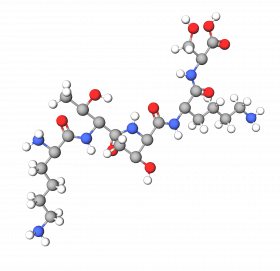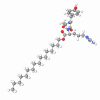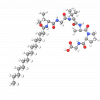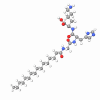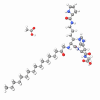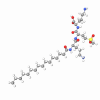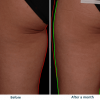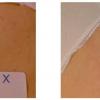Pentapeptide-4 (formerly Pentapeptide-3) is a synthetic peptide with the sequence KTTKS (Lys-Thr-Thr-Lys-Ser-OH), a fragment of pro-collagen I. It is known under the trade name Micro-Collagen™ (Sederma S.A.; 99820559). It stimulates the production of dermal matrix components by fibroblasts. However, its ionic nature doesn't allow the delivery of the KTTKS peptide through the skin barrier without special methods like iontophoresis.
Pentapeptide-4's derivatives were more successful thanks to the solution of delivery problems. The first lipo-peptide in the Matrixyl™ range, Palmitoyl Pentapeptide-4 (formerly Palmitoyl Pentapeptide-3), is a superstar ingredient used in many anti-aging products over the last decades. Another derivative with similar properties is Myristoyl Pentapeptide-4 (formerly Myristoyl Pentapeptide-3), known under the trade name Collasyn 514KS, which is also a successful ingredient.
Thanks to its ability to bind to fibroblasts, Pentapeptide-4 has found an unexpected application - as a targeting peptide in an advanced delivery system, where it is conjugated to a vehicle capsule to guide active ingredients directly to target cells. In a delivery system called Trojan®, it is connected with a polymeric capsule consisting of Lactic Acid/Glycolic Acid Copolymer (PLGA) with a covalent bond.
Binding to fibroblasts through a "key/lock" type recognition mechanism, Pentapeptide-4 significantly enhances the effectiveness of the complex, functionalizing the polymeric capsule to deliver actives directly into cells and minimizing their concentration. It provides a targeted, sustained, and controlled release of active ingredients into the target cells.